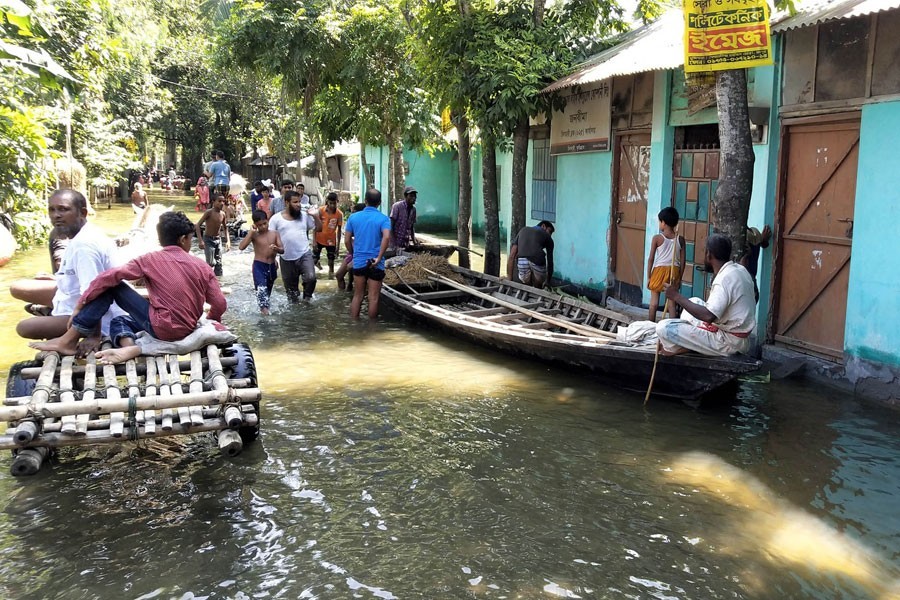Amidst all attention now drawn to an unprecedented outbreak of dengue fever across the country, the loss and sufferings caused to an estimated 0.65 million farmers in 31 districts by the latest bout of floods have gone almost unnoticed.
More than 6.0 million people have so far been affected by the latest floods in different regions of the country.
According to the Department of Agricultural Extension (DAE), crops having an estimated value of Tk 11.5 billion were damaged by the floods. The most affected crops included vegetables, jute and aus paddy. The floods also caused damage to broadcast aman and transplanted aman seedlings cultivated on a sizeable area.
The DAE has reportedly taken up a Tk 800 million scheme to encourage cultivation of mustard, maize and wheat in the next dry season to partially compensate for the loss suffered by farmers.
However, the DAE action appears to be too little given the extent of loss that the flood-hit farmers have suffered.
Barring the loss of crops, people in the flood hit areas also lost their livestock and fish farms.
According to a report published in this paper, an estimated 1,321 livestock and 466 poultry farms were affected by the latest floods in a number of districts in the country.
The number of deaths from flood-related causes such as drowning, snakebites, lightning strikes, and diseases, according to a news agency report had also reached 119 until July 29 last.
Moreover, many villagers in the flood-affected areas had to dismantle and relocate their houses as erosion turned severe in the case of some rivers.
Besides, embankment-cum-roads in many places were damaged by the onrushing flood waters. It would take months or even some years to get those repaired because of the usual lengthy procedure involved in getting government funds. Until then, the locals would have to bear with the difficulties.
There is no denying that villager here are acclaimed world over for being resilient to natural calamities like floods and cyclones. They have the strong ability to recover from the devastations caused by such calamities within a short period.
Yet, the flood-hit people do always deserve some immediate help from the government as well as the affluent section of society. It is hard to say such help was there when they needed it most. In many countries, marooned people are rescued and ferried to safer places by the government agencies. That is rarely done in Bangladesh as flood-hit people, in most cases, are found to be unwilling to leave their homes. If evacuation becomes essential, they themselves do it and without any government help.
The fact remains that assistance of all sorts has not been in commensurate with the losses people have suffered in the flood-hit districts. No high-profile individuals belonging to both side of the political divide were seen distributing relief in the flood-affected areas.
Dengue until recently was a Dhaka city-centric vector-borne disease. Only this year it has travelled to other district headquarters and taken an epidemic form. Because of its concentration in urban areas, the disease has got serious attention of all, including media. The government also could not be oblivious of the development and had to initiate immediate actions. Yet, for some delayed actions on the part of the two city corporations, the government is being forced to swallow bitter criticisms coming from all directions.
Unfortunately, farmers who are the worst-hit by the latest floods are not an organised group of people and none also seems to be interested to speak for them. The voice of the media on this particular issue has also been feeble.


